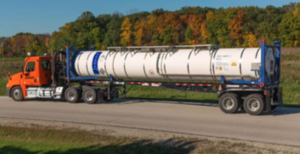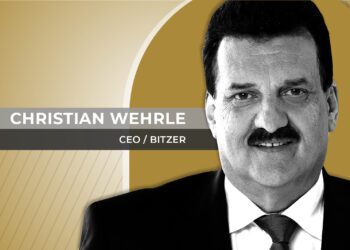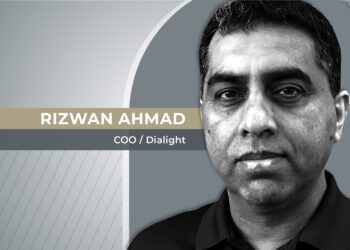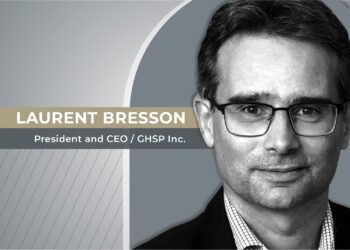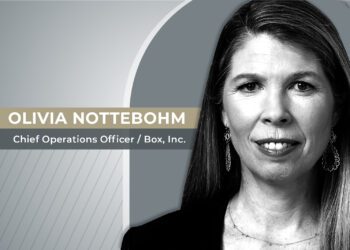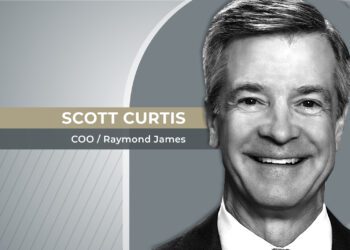Even just before retirement, CEO Chris Lofgren works on staying ahead of the changing business trends at Schneider.
For Chris Lofgren, president and CEO of Schneider, the opportunity to lead the historic logistics company came as a welcome surprise.
In 2002, he was happily serving the firm as Chief Information Officer when former CEO Don Schneider asked Lofgren to succeed him, first as COO and later as Chief Executive Officer. “Essentially, I thought I had the best job in the world. Then Don asked me to be COO, and I said, ‘If that’s what you want me to do, that’s fine,’” Lofgren joked. “It really wasn’t something I was aspiring to do. I just kind of ended up here.”
Yet Lofgren is being unnecessarily modest. He took over Schneider just as the logistics business, driven by new trends in globalization and technology, was beginning to change rapidly, and soon found that he relished the challenge. “The market changed, and we had to change, or we would have become defunct,” he said.
“That’s what happens to businesses. You have to change yourself, or you tend to get eradicated.”
Founded in 1935 by Al Schneider, who started out offering long-haul transportation and distribution services with a single truck (Don Schneider is his son), Schneider is a provider of truckload, intermodal, and logistics services headquartered in Green Bay, Wisconsin. The company is one of the largest truckload carriers in North America, traveling over 9.3 million miles per day moving freight, operating approximately 10,700 company trucks and 56,000 trailers and containers while also utilizing approximately 2,800 owner-operators and 26,000 qualified carrier relationships.
Schneider posted total revenue of $4.4 billion for 2017, up 8% from the previous year, and operates a range of logistics solutions which include Regional, Long-Haul, Expedited, Dedicated, Bulk, Intermodal, Brokerage, Cross-Dock Logistics, Supply Chain Management Consulting, Port Logistics, and Final Mile Delivery.
Spun public on the New York Stock Exchange last year with an IPO of $19.50 per share, Schneider (SNDR) boasts over 200 facilities worldwide, including a presence in the U.S., Canada, Mexico, and China. Its customer base currently includes more than two-thirds of the Fortune 500 list.
Yet according to Lofgren, the company is ripe for further success.
A changing industry
Logistics, which is essentially the capability to enable manufacturers and suppliers to reach their customers, has changed substantially over the past two decades. Globalization, changing market demands, and the growth of new technology have all propelled the business into an exciting new direction, which means that to stay competitive, Schneider has had to adapt, and Lofgren has led many of these changes during his time as CEO.
“If we look at what happened in the 2000s through this decade, the industry has changed a great deal,” he explained.
“The intermodal business started to take off both internationally and domestically due to the growing number of imports in support of retail. Our heritage was really as an over-the-road, long-haul truckload carrier. As a lot of the retail businesses moved to put their inventories closer to the shelves, you could see that length-of-haul, or average distances, were shrinking dramatically. e business had to change itself from that kind of a model to one that was more regional in nature.”
Yet the evolution of the logistics industry went beyond the physical movement of goods to affect the entire business model of Schneider, notably in the areas of technology and analytics.
“How you think about pricing, how you think about dispatching, how you think about where your drivers are located, all of that really had to change,” said Lofgren.
“We built up our logistics business to have a much bigger brokerage component as opposed to a contract logistics business. That was also a really different way of thinking about the business.”
Maximizing data
As he sought to lead a transformative period for the company, Chris Lofgren realized that in a rapidly changing business and logistics landscape, Schneider would have to become technologically adept if it wanted to retain its position as the premier logistics company in North America, and he and his team went to work developing a solution.
“We had all this disparate technology and it didn’t connect well, there were too many different types of data,” he recalled. “That’s not unusual, but from my standpoint, not a good way to become an operationally excellent company. So, we set out to integrate our horizontal value chain, which meant everything from how we thought about prospecting to sales and quoting, all the way up to load selection, dispatch, and cash collection.
“We ended up having everybody at the company operating o one version of the truth, and that’s a powerful place to be.”
To this end, Lofgren and Schneider partnered with Oracle to create something called the Quest Platform, an enterprise transformation initiative which included a next-generation IT platform that enabled Schneider to make informed decisions at every level of the enterprise, drive profitability and reduce costs across divisions.
With Quest, Schneider has transitioned from a tradition of building applications in-house to a hybrid approach where the company uses commercially available best-of-breed industry applications for key back-office, front-office, and operational functions, and custom applications for critical capabilities that offer a competitive advantage.
“We optimized vertically to align people around two metrics, which I think of as our version of ‘Moneyball,’” Lofgren explained. “People should understand how their decisions and what they do drive that metric, and for us those two things were operating contribution per truck and per load. Everything from revenue taken all the way down to fixed direct costs.”
Lofgren views operational excellence in today’s logistics industry through the lens of adding increased productivity in a business where every additional minute of delivery and pick-up time counts. Yet amid so much data and analytics, the human ability to deliver quality service still counts.
“Just as importantly, it’s the productivity of our drivers and a lot of what we’re doing is going back and saying, if you look at a driver who has a fixed amount of time they can drive every day, and you can make them more productive on the pickup and the delivery side of that work, they can generate more income and we can generate more revenue across a fixed asset,” Lofgren detailed.
“There’s a lot of focus on productivity right now, and there always should be. The decisions we make today a affect the decisions that we’re going to have to make tomorrow and understanding how those things relate is really important.”
Plans for growth
Both the growing nature of trade and the level of technology that enables it to run efficiently are precisely the areas where Lofgren sees significant growth potential for the company.
In short, as vendors depend less on conventional distributors and retailers, and increasingly sell their products directly from their websites, opportunities have opened for logistics companies like Schneider to get involved.
“We’ll grow organically as the market allows us to grow in our standard equipment business, but in the specialty business we’re looking to find new places to play,” Lofgren described. “We have significant scale in our dry van business, essentially that standard trailer, but we think that specialty trailing equipment creates opportunities for us to become more deeply embedded in our customers’ supply chains.
“The other area we are growing now is really aligning ourselves to this whole world of the e-tailer,” he added. “In the past, companies that manufacture, say, furniture or exercise equipment, would tend to go through a distribution or retail channel to get to the customer. Now with the ability for them to offer customers the opportunity to purchase o a website, they need a supply chain.
“The two recent acquisitions we made (Watkins & Shepard and Lodeso) really creates a mechanism for us to integrate with e-tailers and do a first-to-final-mile delivery into the home; a one- stop shop, if you will. A good deal of growth should come in that area as well.”
Supply chain competence
Lofgren views the various strategic partnerships that Schneider has built over the years as key in bringing together the pieces that the company goes to market with, from the purchase of tractors, trailers, fuel, and tires to the way they are increasingly embracing technology.
“On the customer side, it’s interesting because in the truck-load and logistics business, it’s a pretty fragmented marketplace. Where opportunities are going to come in the supply chain going forward is really at the interface among all these different players and the ability to have good current and future information from which people can make decisions and execute. Take the amount of information that pours out of a truck today – which is absolutely amazing, from what’s going on with the engine, what’s going on the braking system, to what’s going on with fuel. How do we extract that information in a way that helps the customer help us and which helps us help ourselves? We’re a very data driven organization.”
Ultimately, Lofgren believes that Schneider’s ability to manage the information coming from every aspect of its business and channel it through the key metrics described is central to the future of the company, a business that began in the 1930s with one long-haul truck and today is an industry leader within an increasingly complex and technology-driven world.
“That’s the key,” he said. “It’s aligning the ow of information through technology and making it available to people so they understand the implications of the decisions they make. That’s just at the heart of operational excellence.”
A new adventure
Wisconsin-based Schneider National announced Oct. 30 that CEO Chris Lofgren will retire in April and that he will be replaced by current Chief Operating Officer Mark Rourke.
Rourke has been with Schneider for over 30 years, holding positions as the director of driver training, vice president of customer service and several other titles.



